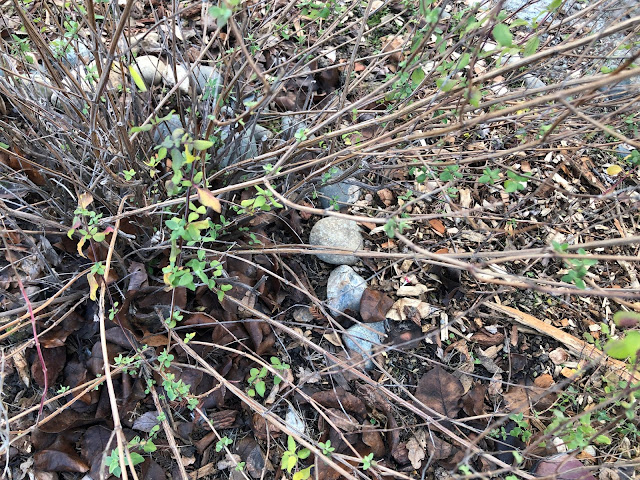

|
| Look how leggy this “Hot Lips” salvia has become, even though it’s in a warm spot with plenty of sun. Time to prune it back. (Photos: Kathy Morrison) |
Pity the blooming perennial. Once in the ground, it’s considered so reliable that it’s essentially ignored. The gardener gets busy planting annuals, seeding vegetables and spraying fruit trees. The needy bloomers, such as roses, get attention, too.
Meanwhile the salvia pushes out flowers, attracting bees and other pollinators. This goes on for years, perhaps, until the gardener happens to focus on it. “Wow, that plant has really gotten leggy, and doesn’t bloom as much.” So the perennial is pulled out, tossed in the green waste bin, and the cycle starts over.
It doesn’t have to be that way. And the answer is simple: Whack it back during the winter.
Many other perennials take care of themselves by dying back to the ground in the winter. My coneflowers always freak me out a little when they do this; they always return.

|
|
Here’s the same salvia after lopper pruning. I then took my pruning
shears, with some finer control, to the dead stubs at the base. |
Quentyn Young, manager of Fair Oaks Boulevard Nursery and a master gardener, gave a great Zoom presentation on pruning woody shrubs at a recent online meeting of the Sacramento County master gardeners.
Here’s his list of popular woody perennials that can and should be pruned hard now:
— Abutilon. This beauties can get quite leggy, he says.
— Buddleia (butterfly bush). These can grow 4 feet in a year, so cut to the ground or at least to 2 feet tall.
— Callicarpa (beautyberry).
— Summersweet ( Clethra alnifolia).
— Caryopteris (bluebeard).
— Cotinus (smokebush).
— Crape myrtle. These ubiquitous bushes/trees bloom much better on new wood, Young says.
— Ornamental elderberry.
— Chaste tree ( Vitex agnus castus) Remove one-third to one-half of the bush.
— Mock orange (Philadelphus virginalis).
— Nandina (heavenly bamboo).
— Podocarpus (fern pine).
— Sages (salvia), including pineapple sage. They can go almost to the ground.
Important to note: Anything flowering now or due to bloom in spring should not be pruned until after bloom. These plants include camellias, lilacs, loropetalum, winter daphne, witch hazel and flowering quince.
Evergreen “foundation” plants can also benefit from winter pruning or at least shaping, Young noted. This group includes photinia, escallonia, pittosporum and euonymous. Woody herbs such as lavender also should be reshaped in winter.
The Sacramento master gardeners filmed a helpful video about pruning woody sages for Harvest Day last summer. It addresses both summer and winter pruning. Check it out here: https://youtu.be/-SZIpyaGc0o
Kathy Morrison Hellesen is a newly minted Sacramento County master gardener.
Comments
0 comments have been posted.Sacramento Digs Gardening to your inbox.
Sites We Like
Garden Checklist for week of July 21
Your garden needs you!
* Keep your vegetable garden watered, mulched and weeded. Water before 8 a.m. to reduce the chance of fungal infection and to conserve moisture.
* Feed vegetable plants bone meal, rock phosphate or other fertilizers high in phosphate to stimulate more blooms and fruiting. (But wait until daily high temperatures drop out of the 100s.)
* Don’t let tomatoes wilt or dry out completely. Give tomatoes a deep watering two to three times a week.
* Harvest vegetables promptly to encourage plants to produce more. Squash especially tends to grow rapidly in hot weather. Keep an eye on zucchini.
* Pinch back chrysanthemums for bushy plants and more flowers in September.
* Remove spent flowers from roses, daylilies and other bloomers as they finish flowering.
* Pinch off blooms from basil so the plant will grow more leaves.
* Cut back lavender after flowering to promote a second bloom.
* It's not too late to add a splash of color. Plant petunias, snapdragons, zinnias and marigolds.
* From seed, plant corn, pumpkins, radishes, winter squash and sunflowers.